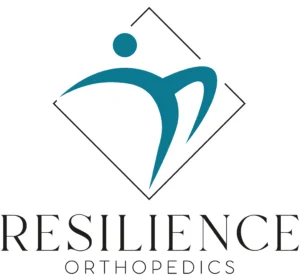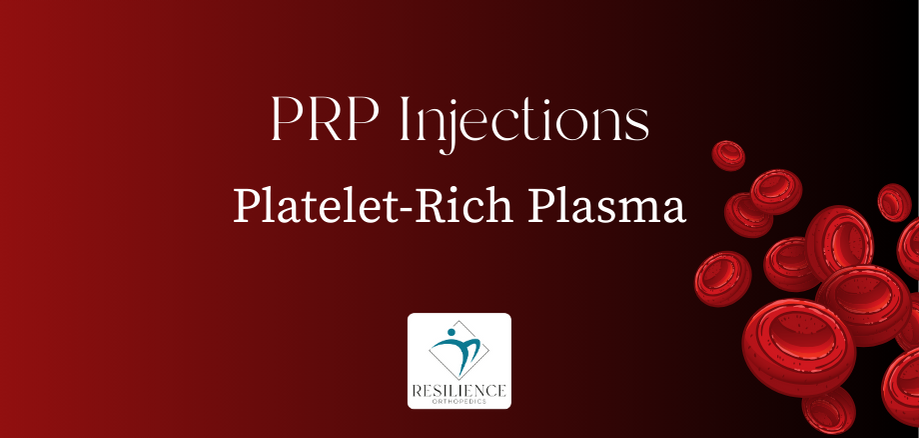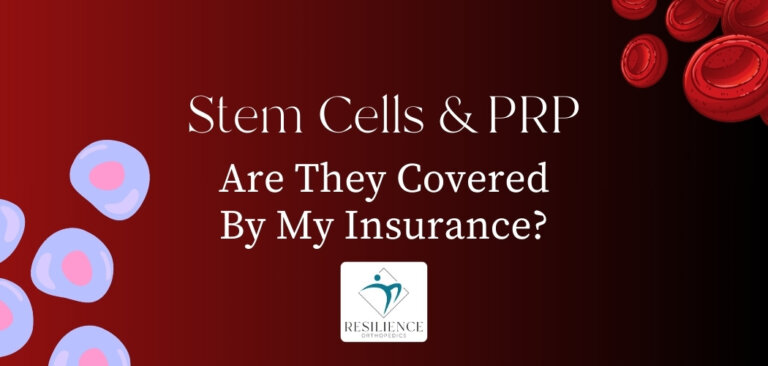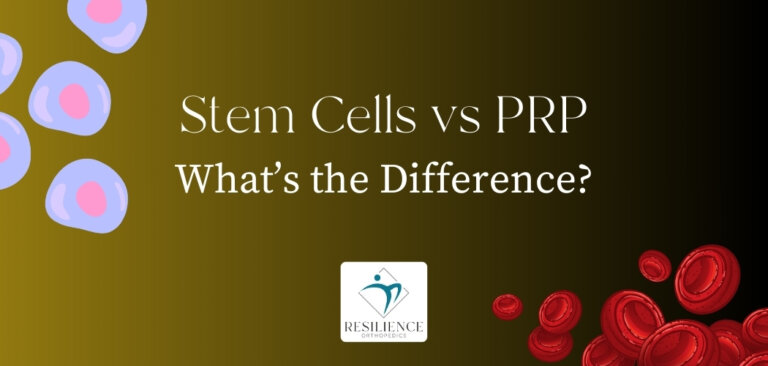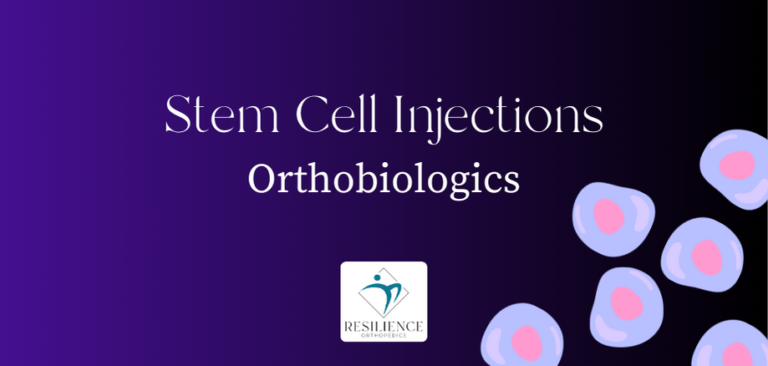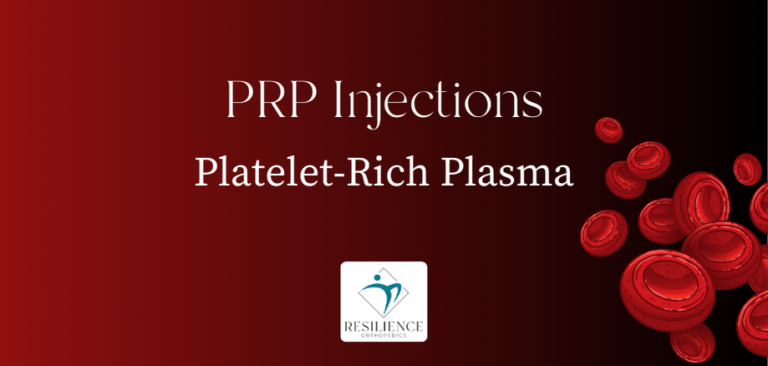Table of Contents
What are Platelet Rich Plasma (PRP) Injections?
Your body has the natural ability to heal itself after an injury or when affected by disease. However, sometimes, the healing process can take some time.
Platelet-rich plasma, also known as PRP, is a regenerative medicine technique, a category that also includes stem cell injections. PRP uses your own blood to speed up this healing process. This is similar to stem cells, but there are pros and cons to both treatments.
Different conditions respond well to PRP injections. Some of these include trauma or injury to your joints, as well as other tissue in your body. Some people use PRP injections to help with male pattern baldness or as a cosmetic facial treatment.
It’s considered a safe procedure, particularly because your own blood is used for the therapy. Sometimes, PRP treatment is used as a standalone option. However, there are also cases where your orthopedist may recommend using this alongside other treatments.
Your doctor will consider factors like:
- What you want to use PRP injections for
- How severe your condition is
- How well you respond to other treatment
One thing to keep in mind is that PRP treatments are generally not considered a permanent solution. Thus, your doctor may advise you to opt for follow-up PRP treatments in San Jose to help ensure you continue to experience the benefits.
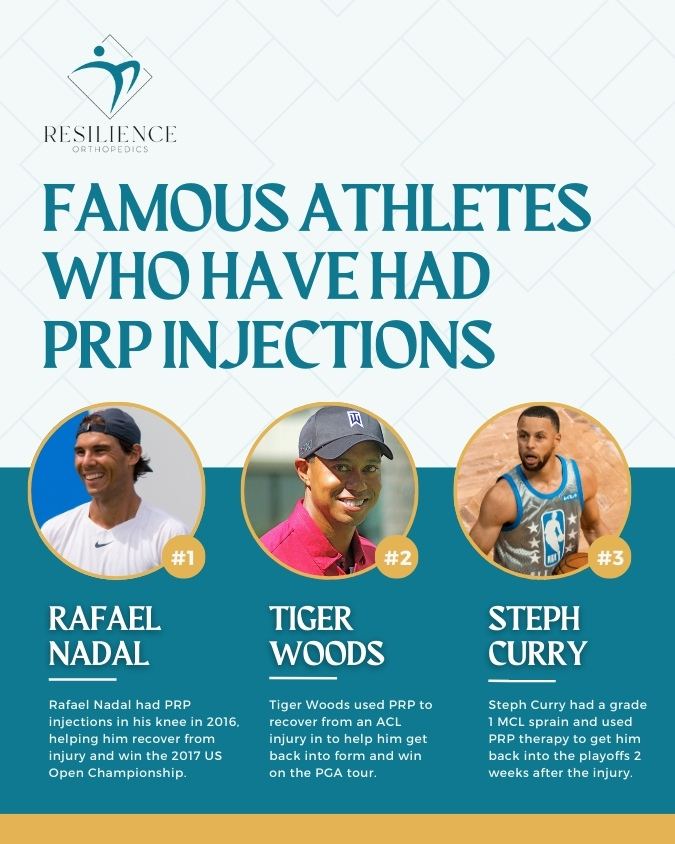
How Does PRP Work?
Something to keep in mind is that PRP treatment is a research topic that scientists are still exploring. This means that PRP is only covered by certain insurance companies.
However, a lot has been discovered already, and currently, the increased growth factors that are introduced to your body hold a strong link to the benefits that the therapy offers.
The process starts by collecting your blood. Your doctor will decide how many tubes of blood they need to begin with the PRP treatment. Your blood is then separated into different components through a centrifuge.
Some of the components that are now available to scientists at a lab include:
At this point, platelets are removed from the blood samples. The lab technicians concentrate on the platelets. This results in a sample that has much more platelets than the original collected from you.
At this point, a blood plasma base is used to deliver these platelets directly into the area where you have suffered an injury, or where the PRP therapy is needed.
The platelets help to stimulate the release of more cells that repair and heal. In turn, this helps to speed up your body’s natural healing abilities.
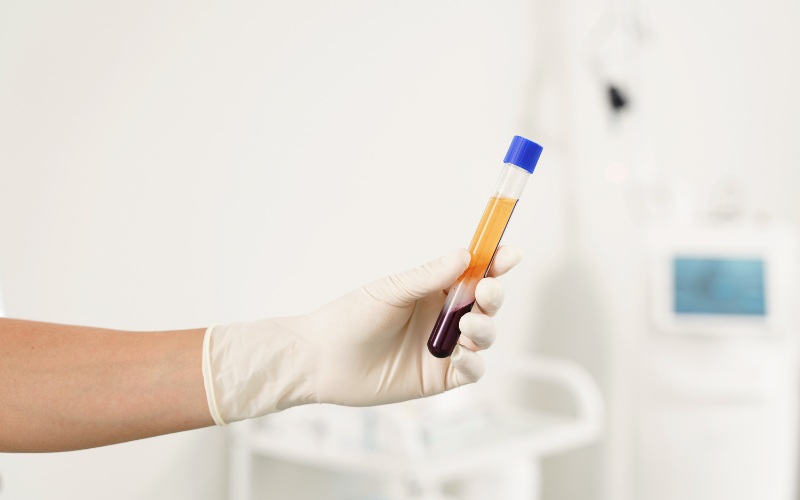
What Joint Conditions Can PRP Treat?
There are a few different joint conditions for which PRP injections is used. We often use PRP for knee conditions and shoulder problems, as injections reach the joint easily.
In most cases, your doctor may recommend giving PRP treatment a try when your joints have been injured. This could be due to trauma or perhaps a specific disease that affects your joints.
Some cases where PRP can be helpful for joint conditions include:
- Sports injuries
- Ligament tears such as ACL tear
- Tendinitis such as biceps tendinitis
- Muscle injuries such as rotator cuff tear
- Cartilage injuries such as meniscus tear
- Osteoarthritis
- Rheumatoid arthritis
- Tennis elbow
- Jumper’s knee
The use of PRP can also be useful to speed up the healing process for tissues surrounding these joints. This includes muscle tissue, as well as your ligaments and tendons.
Book a Consultation with Dr. Pamela Mehta, MD
The Best Orthopedic Surgeon in San Jose
Dr. Mehta is a board-certified orthopedic surgeon who can help you recover from your joint condition. If you:
- Are Suffering From Pain and Mobility Issues
- Need Orthopedic Assessment and Advice
- Want Treatment From a Top Orthopedic Doctor
We Can Help
Evidence for PRP
There are some limitations when it comes to looking at evidence for platelet-rich plasma injections. As a new and emerging treatment, we are still finding out whether there is enough evidence to use PRP for different conditions.
However, as medicine continues to advance, researchers are continuing to investigate this type of treatment. Let’s take a closer look at some of the evidence that’s currently available:
- One study considered the difference between PRP and Hyaluronic acid therapies in knee osteoarthritis. The researchers also focused on identifying the ideal dose when using PRP. Significantly better results were seen among those on PRP therapy.
- Another study looked at the efficacy of PRP therapy in patients who have Rheumatoid arthritis. This is an autoimmune condition where your immune system attacks joints, causing damage. Patients reported an improvement in pain symptoms of up to 50%. There were also improvements in their overall health.
- A Journal entry in Frontiers in Medicine analyzed the safety, as well as the efficacy, of PRP treatment in patients with osteoarthritis of the knee. The Knee Injury and Osteoarthritis Outcome Score system was used. Both pain and ease of doing daily activities improved significantly compared to a control group.
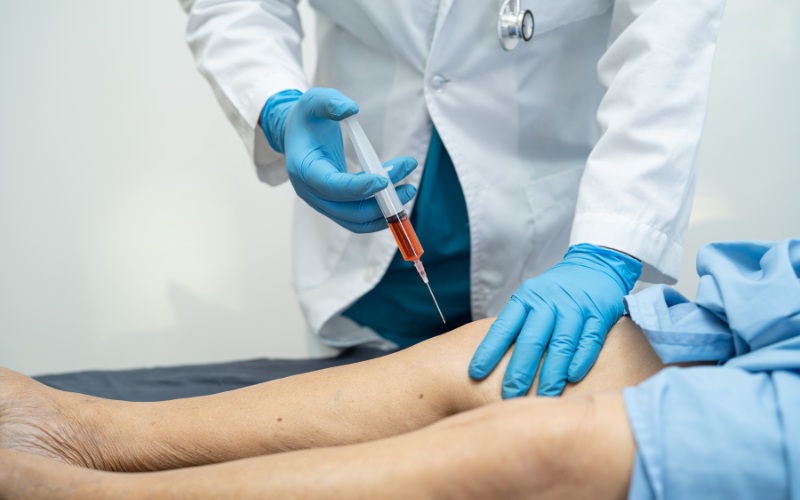
How Does PRP Work?
Having a solid understanding of how PRP injections work is important. You should acknowledge yourself with this information before you decide to look for platelet rich plasma injections.
As we’ve explained, the process starts with your doctor collecting blood from you. You can expect a minimum of one tube to be collected, but sometimes, your doctor may need more than a single tube of blood.
The main goal of PRP is to actually “amplify” the growth factors that are present in your blood. The treatment does this by injecting back a concentrated version of the platelets collected from your blood sample.
When you have this amplification in your growth factors, your body’s natural ability to heal itself should considerably improve. That’s because PRP therapy causes more cells responsible for repairing damaged tissue to be released by your body. When this happens, tissue that has been damaged can start to heal.
It may take more than one session to get the full benefits of PRP, depending on how severe your condition is. Your doctor can explain to you what you should expect and whether you should consider any follow-up sessions.
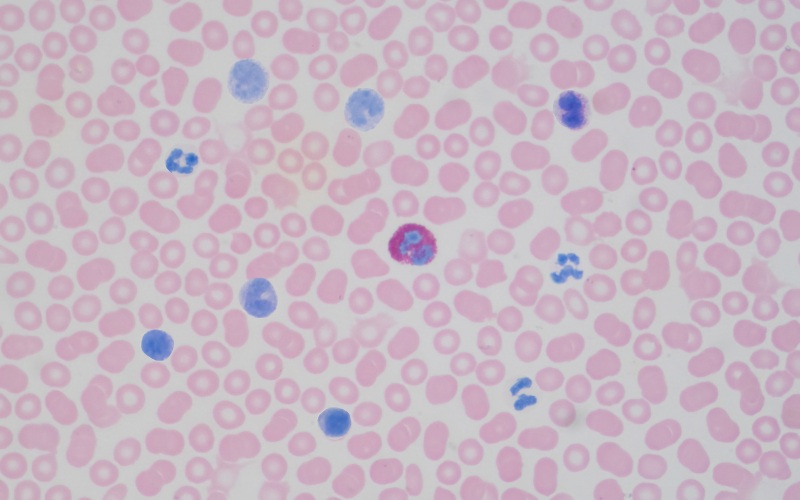
How Long Does it Take PRP to Work?
A lot of people want to know how long it takes PRP to work. Something important that you should realize is that PRP injections are not an instant treatment.
When you decide to take painkillers, it’s generally something that works for acute symptoms. However, it’s not the same for PRP – it will take time for your body to heal.
Once the concentrated platelets are injected back into your body, they will speed up the recovery and healing process. It can still take some time to experience the full benefits that these injections have to offer.
In most cases, it takes about three weeks to start noticing a difference. However, it also varies from one person to another. Some people may begin to feel an improvement sooner, whereas others may need to give it a bit more time.
The severity of the injury does play a role here. The more severe the damage to tissues like your joints and other tissues, the longer it may take your body to heal – even when your natural growth factors are enhanced through PRP.

Benefits of PRP
When you decide to investigate the different treatment options, it’s important that you truly understand the benefits that this therapy can offer. Let’s consider the major benefits to ensure you know more about what you can expect.
1. A Natural Treatment Option
When you use painkillers or anti-inflammatory medication, you are essentially exposing your body to pharmaceutical chemicals. These drugs might help to offer you short-term relief of your pain, but this often comes with side effects.
Long-term use of these drugs can sometimes result in complications with your health. However, it’s important to note that, with the right direction from your orthopedist, the benefits are often greater than the risks.
PRP uses your own blood and doesn’t introduce any of these chemicals to your blood or body. It’s a natural choice that is lower risk than some traditional treatments.
2. Speeds Up Healing
One of the main benefits that comes with PRP treatment is the fact that these injections can considerably speed up your body’s natural healing process.
When you injure yourself, or when there is a disease that damages tissues in your body, special cells need to be sent to this area to facilitate the healing process. However, healing can take time, and PRP can increase these cells to make sure your body heals faster.
3. Multiple Uses
PRP treatments mainly increase the concentration of platelets in the sample, which affects growth factors. This means the therapy actually has a lot of potential uses.
There’s solid evidence behind PRP for people with joint-related problems, especially osteoarthritis. This extends to not only joint diseases but also sports injuries. It’s also useful for healing other tissues in your body, such as tendons and ligaments.
4. Lasting Results
Even though PRP doesn’t offer a permanent solution, it’s still an option that can offer long-lasting results for chronic conditions. This is especially true if you compare the use of PRP injections with options like taking anti-inflammatory drugs. These drugs need to be taken every day.
However, with PRP, you get one (or sometimes a few more) injections, and the results can last well over six months.

PRP Aftercare
Once PRP therapy is done, you can usually go back to your usual routine. However, there are a few things that you should take into consideration.
1. Washing
Depending on the site of the injection, your doctor may advise you not to wash the area for a few hours.
2. Take it Slow
When PRP therapy is used to target joints, you’ll also need to take it slow on the first day or so.
3. Take Care of Yourself
It’s also important that you take care of yourself once you’ve undergone PRP treatment. This is because, at that point, your cells need to work harder to start healing the damaged tissue.
Eating a healthy diet and looking after yourself properly can help your body work more efficiently. You should also keep your body hydrated – about four to six large glasses of water daily is a good idea.
4. Limit Exercise
You should also avoid doing any vigorous exercise shortly after the treatment. Your doctor will usually tell you for how long you should avoid these exercises, but it’s usually for about five days.
5. Substances to Avoid
Apart from this, you should also try to limit your exposure to things like cigarettes, alcohol, and caffeine. In fact, some doctors may tell you to avoid these things a few days before you go for the procedure.
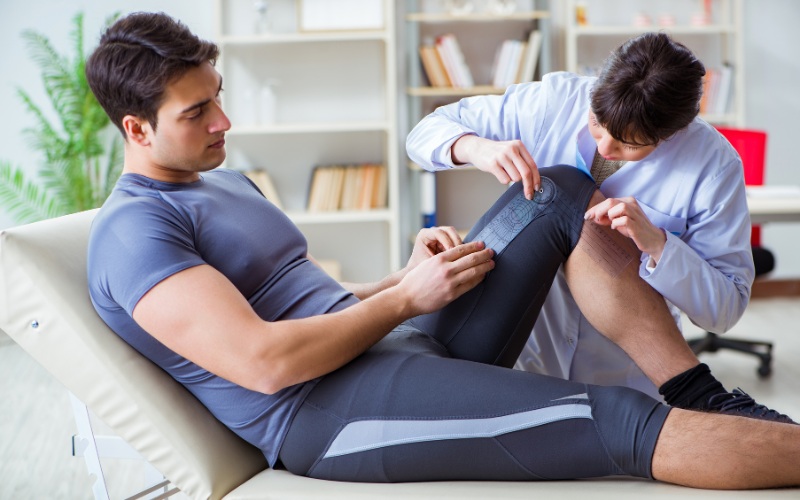
How Long Should You Rest After PRP Injection?
It depends on a couple of things, such as:
- The reason why you got a PRP injection
- What’s being treated
- The type of treatment itself
You should, however, take it slow on the day of the procedure.
Sometimes, you may be advised to go back to your usual routine the day after. There are also cases where your doctor may tell you to rather stay at home and rest for a few more days. This can help to keep specific parts of your body still during the early treatment stage.
Be sure to ask your doctor how long should you rest after PRP injection, as they can give you a more accurate timeline.
Ready to Recover?
Take the first step in getting back to your normal self, and book an appointment with Dr. Mehta today.
We’re ready when you are!
Why Should I Have No Caffeine After PRP?
A very common question that people have is why you should have no caffeine after PRP? This is something that your doctor will tell you to avoid, and you must follow through on this instruction.
The main thing here is the fact that caffeine can interfere with the function of platelets – and during the first few days after PRP therapy, the treatment largely depends on these platelets functioning properly to give you successful results.
In short, caffeine interferes with how well PRP will work.

How Long Do PRP Injections Last?
One of the most common questions that patients have regarding this treatment is how long PRP injections last. There are a couple of things that affect this.
For most people, the answer is between six and nine months. You may start to notice that the effects of the PRP treatment begin to wear off at this time. It’s possible to opt for further treatment if you feel like this therapy helped.
There are also cases where the effects last much longer.
In one study, published in the ELSEVIER journal, researchers wanted to see how PRP therapy held up after about five years. The patients who were part of the research group had undergone PRP therapy for refractory lateral epicondylitis.
At the five-year mark, 87.1% of these patients still experienced the benefits of the therapy. This provides evidence of the long-term effects that PRP treatments can offer. Some of the patients also went for repeat injections.

Summary
PRP (platelet-rich plasma) is a treatment which uses your own blood to speed up healing. It’s mainly for joint injuries or diseases, but also for hair loss and cosmetic purposes.
How it works:
- Your blood is collected and separated into components.
- Platelets are concentrated and injected back into the injured area.
- Platelets release growth factors, stimulating cell repair.
Benefits:
- Natural and safe (uses your own blood)
- Speeds up healing
- Can last up to 6-9 months (sometimes longer)
- Useful for various conditions
Things to know:
- Not an instant fix, takes time to work (3 weeks+)
- May require multiple sessions
- Avoid caffeine and strenuous exercise after treatment
- Talk to your doctor about potential risks and benefits
Overall, PRP is a promising therapy with potential benefits for various conditions. However, it’s important to discuss it with your doctor to see if it’s right for you.
